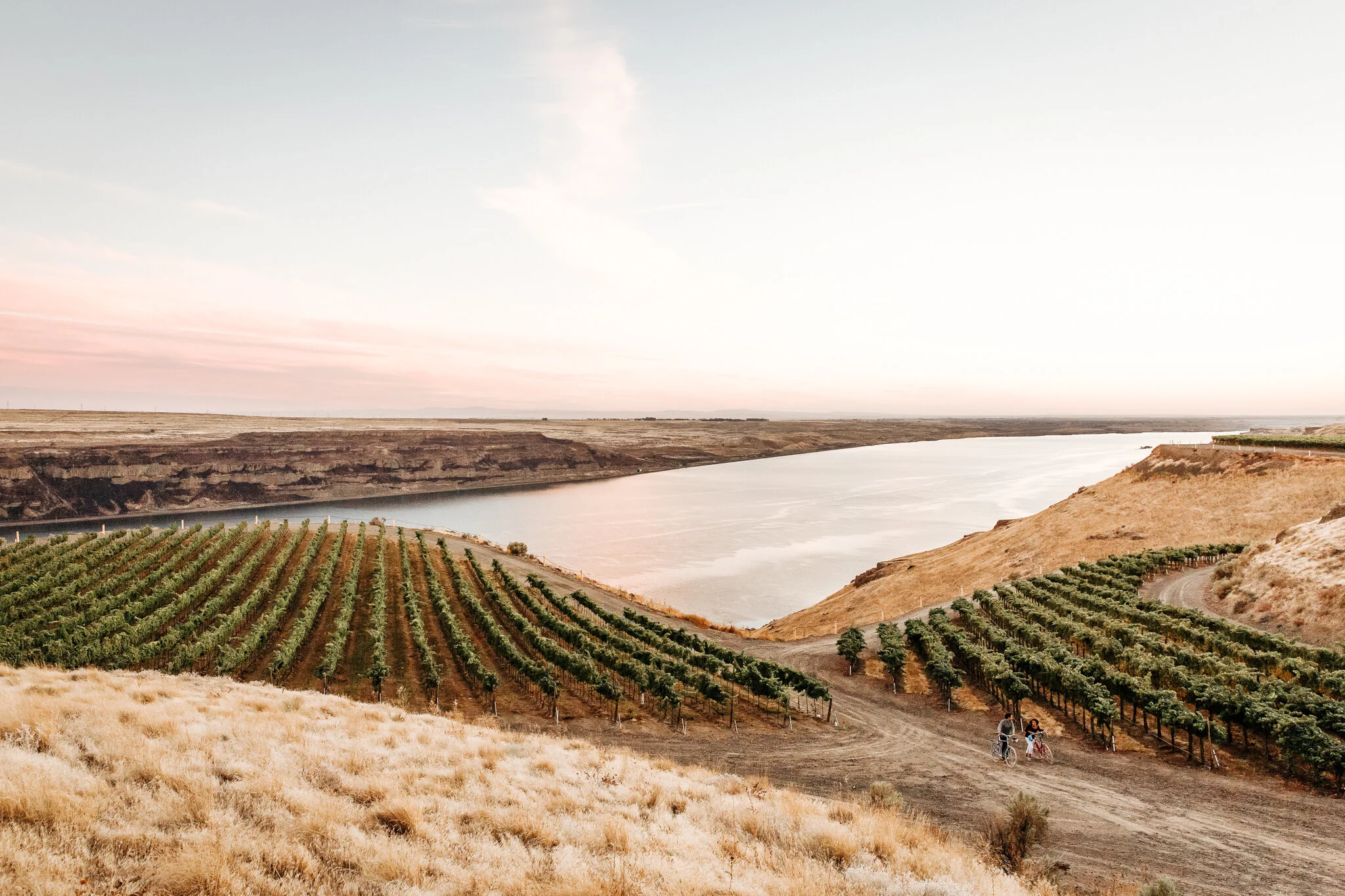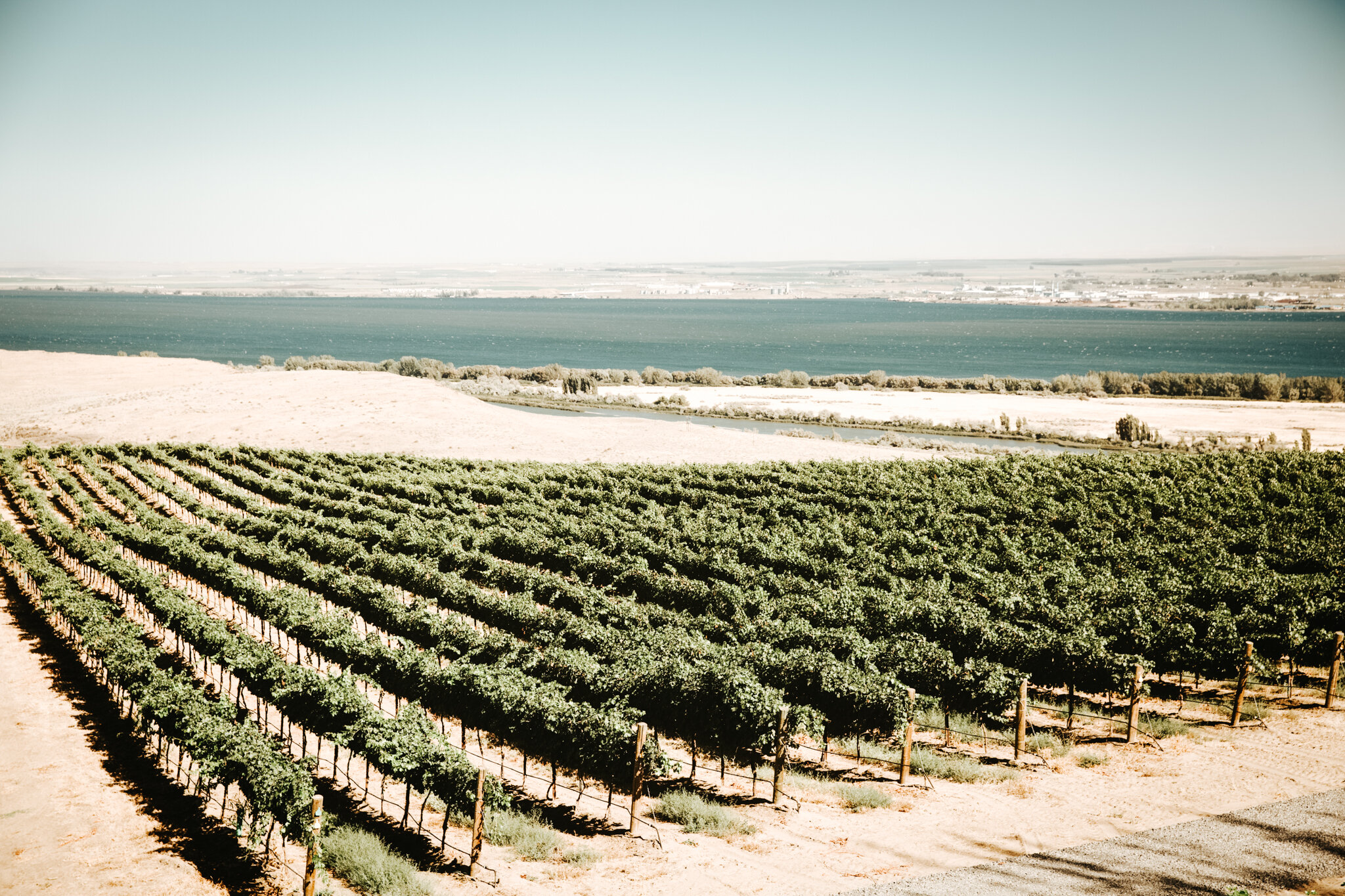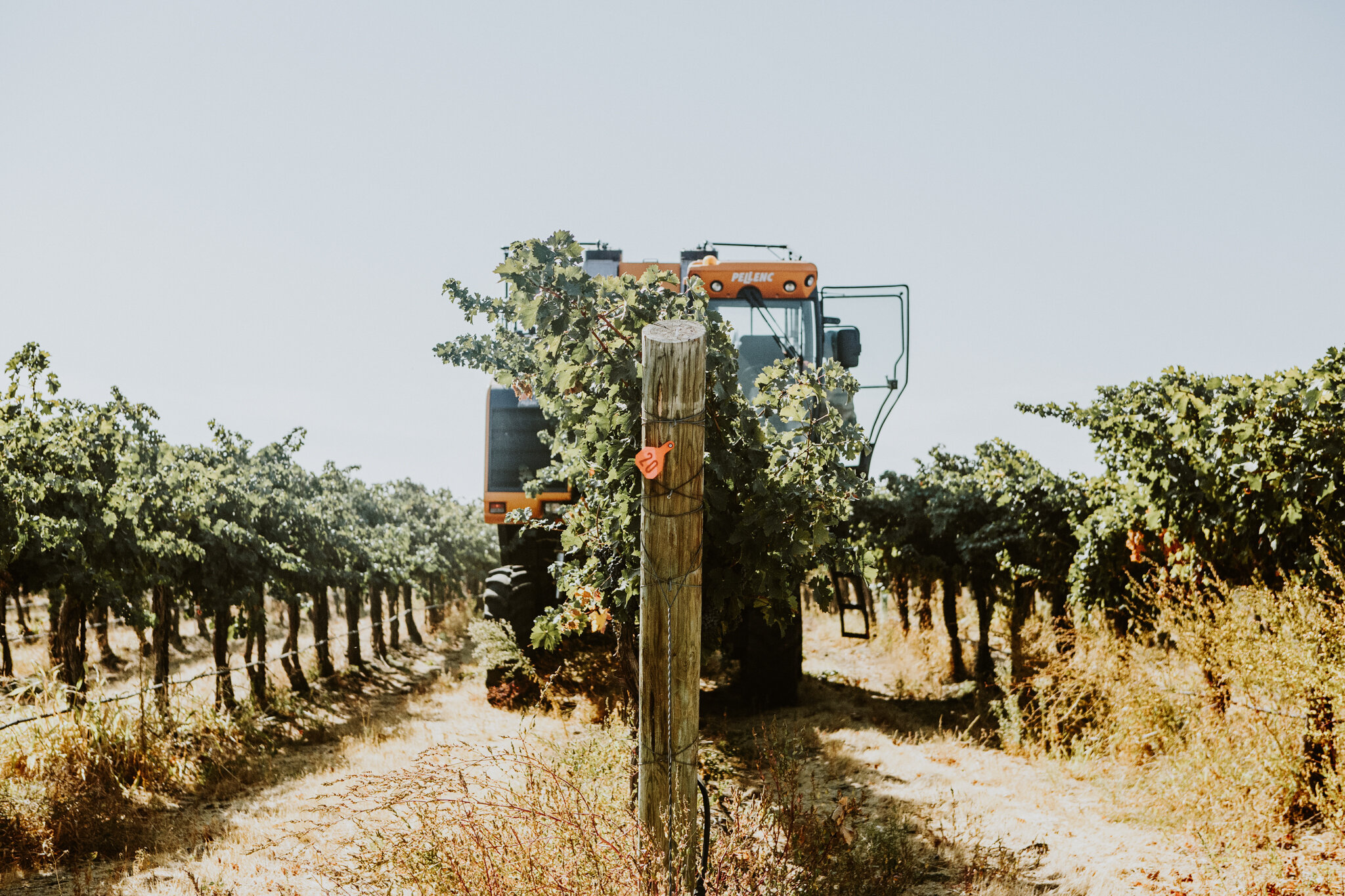
Bone-dry deserts, upriver winds from the Columbia River and long sunny days make the perfect conditions for growing wine grapes in the Horse Heaven Hills. Fine tannins and deep, concentrated fruit flavors are characteristics that put our region on the map - synonymous with some of the most acclaimed wines in the Northwest.
Horse Heaven Hills
Horse Heaven Hills is a 570,000-acre stretch of land located in South Central Washington state along the Columbia River, near the town of Paterson. The AVA was established in 2005.
Unique Features
Topography
Mostly south-facing, well-drained sandy soils dotted with dry plains, lending optimal sun exposure for ripening and protective air drainage, ideal in winter months.
Precipitation
Average of nine inches annually, usually during dormancy; very limited irrigation prevents vine canopy growth and results in well-balanced grape characteristics.
Wind
Brisk wind patterns contribute to a thinner canopy and more sun exposure that helps with ripening while naturally preventing pests.
Temperature
Warmer growing season fully matures grapes earlier in the harvest season (decreasing the risk of fall frost).
Prevalent Varietals
Merlot, Cabernet Sauvignon, Chardonnay, Pinot Gris, Sauvignon Blanc, and Syrah.
Canoe Ridge Vineyard
The 181-acre Canoe Ridge Estate is located in the Horse Heaven Hills AVA on a slope above the Columbia River. Sweeping, river-driven winds keep the vine canopies dry while tempering summer temperatures for ideal ripening. Sitting on warden sandy loam soils, elevations vary from 425-740 feet above sea level. Rainfall averages six inches annually, and vines receive drip irrigation only when needed. The vineyard has the advantage of maturity (some vines are 25 years old), producing arguably the best Merlot in the best Merlot-producing region in the country, in addition to award-winning Chardonnay, Cabernet Sauvignon and more.
Planted in 1989, nearly all of our wine grapes are sourced from our vineyard in the Horse Heaven Hills AVA, with some additional sourcing from our esteemed sister vineyards in the appellation. Perched on a ridge above the Columbia River, the vines are planted on their own roots on a sloping ridge at 425-740 feet in elevation. Here, well-drained sandy loam and basaltic soils allow deep rooting. Cool nights provide ideal temperatures for excellent sugar to acid balance, and low rainfall (about 6-8” annually) translates to excellent flavor concentration. The vineyard’s latitude and south- and north-facing orientations help vines soak up more than 17 hours of sunshine per day at the peak of summer, resulting in rich, fully mature flavors and supple tannins.
Planted Varieties
Merlot, Cabernet Sauvignon, Malbec, Syrah, Chardonnay, Petite Verdot and Cabernet Franc
Soil
On Canoe Ridge Vineyard, the sandy loam ranges in depth from 18 inches to five feet. This mixture allows the vine roots to drill deep for nutrients while providing excellent drainage. Here, vines grow on their own roots, in part thanks to below-freezing winters that thwart Phylloxera (a vine-killing pest common in France and California).
Topography
The vineyard is located at a wide expanse of the Columbia River, which moderates the vineyard temperature in both summer and winter from hot and cold extremes. During winter, the moderating effects of the river keep Canoe Ridge an average of 10 degrees warmer than other parts of the Columbia Valley.
Interesting Fact
Canoe Ridge Vineyard is said to have inherited its name from explorers Lewis & Clark. During their 1805 exploration, someone remarked that the nearby ridge resembled an overturned canoe.
The Benches
Formerly known as Wallula Vineyards, The Benches are located 20 minutes southeast of Pasco on the Washington side of the Columbia River. A dramatic series of tiered benches lead down to the river, creating the most picturesque vineyard in the state.
Planted Varieties
The vineyard is divided into more than 60 blocks producing more than 15 different grape varieties. Different elevations provide unique micro climates and match each grape variety. At the cooler, top portion are the whites: Riesling, Chardonnay and Pinot Gris. Midway we have the warmer climate Merlot, Cabernet Franc and Petit Verdot. At the lowest and hottest tiers are Cabernet Sauvignon, Syrah, Grenache and Malbec. Other more exotic varieties (Sangiovese, Mourvedre, etc.) are planted in small quantities on various slopes of the vineyard.
Soil
Sandy loam
Topography
This vineyard has 27 geologically formed benches created nearly 20,000 years ago by the Great Missoula Floods. These benches start at an elevation of 1,400 feet and step all the way down to the shore of the Columbia River.
Interesting Fact
Each year Precept Wine sources more than half of the fruit grown on this stunning vineyard to many of the state’s most respected boutique wineries. In 2015, the vineyard came under full Baty ownership. It continues management by the Den Hoed family.
Alder Ridge Vineyard
Alder Ridge is one of the state’s largest and most coveted vineyards, on a rolling plain set atop a steep bluff above the Columbia River. Its first vines were planted 1997. Natural wind and air drainage protects the vines from the dramatic weather changes, both in the summer and winter. Alder Ridge is known for exceptional long hang time, with a moderating effect of the river on summer heat spikes and winter freezes, giving the Cabernet for which the vineyard is known tougher skins and firm tannins.
Planted Varieties
Cabernet Sauvignon, Merlot, Chardonnay, Syrah and specialty vines totaling 28 varieties, including some of Washington’s most sought-after Rhone varieties.
Soil
Bone-dry desert averaging four inches of annual rainfall. Sandy soil.
Topography
Elevation ranges from 300 to 1,000 feet. South facing, differing slopes offer a wide range of exposure offerings. Considered a warmer vineyard site, it is usually one of the last vineyards to be picked, mostly because of the dramatic dips in temperature at night in fall.

Viticulture
To maximize sunlight, we practice vertical shoot positioning, which trains vines in an up-and-over, T-formation. Spacing between rows 9-10 feet apart also helps capture optimal light. With so little rainfall in the growing season judicious under-vine sprinkling and drip irrigation are utilized.
Target harvest tonnage is two to four tons per acre, and Canoe Ridge often sacrifices its prolific yield for premium quality by “dropping fruit” during the growing season and allowing more energy to ripen less fruit. The result is a bigger, riper berry with tremendous flavor and phenolic balance.
Harvest
Our grapes are harvested (both by machine and by hand) primarily at night/pre-dawn to keep the skins cool and fruit pristine before crushing. Vine care is customized to each block, with each vine touched 12 times during the season. Our estate-tier block clusters are sorted in the vineyard and again at the winery on a belt sorter, where they remain in whole clusters on gentle path to the fermenter.


